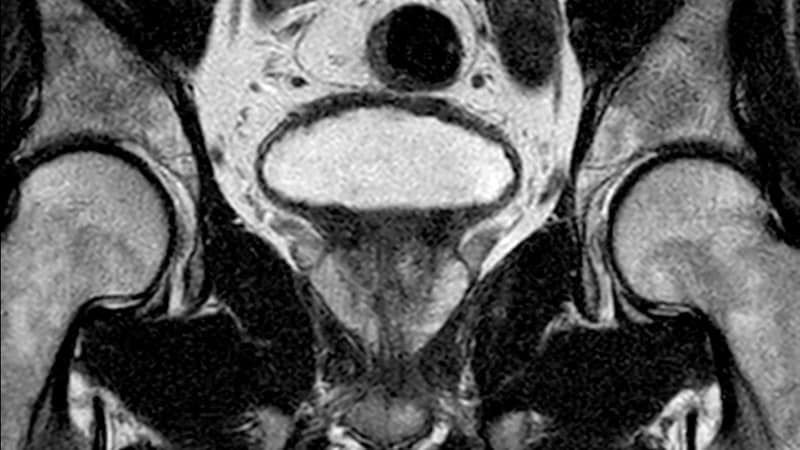Paradigm Shift in Prostate Cancer Screening Studies
Core Concepts
Adding multiparametric MRI to PSA screening can improve prostate cancer detection rates.
Abstract
The ReIMAGINE study from the UK and a Swedish population-based study suggest a shift in prostate cancer screening methods.
ReIMAGINE Study:
- Half of men with PSA levels below 3 ng/mL had significant prostate cancers with MRI.
- 1 in 6 screened men had prostate lesions on MRI.
- PSA and MRI-first approach reduced biopsies and active surveillance.
Swedish Study:
- Pre-biopsy MRIs with PSA testing decreased negative biopsies and low-grade cancers.
- MRI is now standard before biopsy in Sweden due to high prostate cancer mortality rates.
US Perspective:
- PSA screening rates have declined in the US.
- Urologists debate the reliability of MRIs in prostate cancer detection.
- MRIs are recommended before biopsies in the US but underutilized.
Expert Opinions:
- MRIs can serve as a triage tool for prostate biopsies.
- MRI should not replace PSA testing but complement it.
- The long-term benefits of increased cancer detection need further evaluation.
Customize Summary
Rewrite with AI
Generate Citations
Translate Source
To Another Language
Generate MindMap
from source content
Visit Source
www.medscape.com
Is This the Best Screening Test for Prostate Cancer?
Stats
"half of men with apparently 'safe' levels of prostate-specific antigen (PSA) below 3 ng/mL had clinically significant prostate cancers when multiparametric MRI was added to screening."
"1 in 6 screened men had a prostate lesion on MRI."
"the proportion of Gleason score 6 cancers decreased from 24% to 6%."
Quotes
"MRI alone should not be considered more reliable than PSA. Rather, it should be considered complementary." - William Catalona, MD
"In my opinion, it would have to demonstrate some tangible benefit to patients other than finding a greater number of cancers." - Michael Leapman, MD, MHS
Key Insights Distilled From
by Howard Wolin... at www.medscape.com 09-07-2023
https://www.medscape.com/viewarticle/996212
Deeper Inquiries
How can the healthcare system address disparities in access to MRI screening for prostate cancer?
To address disparities in access to MRI screening for prostate cancer, healthcare systems can implement policies that ensure equitable distribution of resources. This can involve increasing funding for MRI technology in underserved areas, providing training for healthcare professionals on the importance of MRI in prostate cancer screening, and offering financial assistance or subsidies for patients who may not be able to afford the cost of MRI scans. Additionally, public health campaigns can be launched to raise awareness about the benefits of MRI screening for prostate cancer, especially among marginalized communities who may have limited access to healthcare services.
What are the potential drawbacks of relying solely on MRI for prostate cancer detection?
While MRI can be a valuable tool in detecting prostate cancer, there are potential drawbacks to relying solely on this imaging modality for detection. One drawback is the possibility of false-negative results, as highlighted in a study reporting a false-negative rate of between 10% and 20% for multiparametric MRI. This means that some cases of prostate cancer may be missed if MRI is the only screening method used. Additionally, there may be limitations in the availability of MRI technology in certain healthcare settings, leading to disparities in access to screening for prostate cancer. Moreover, the cost of MRI scans can be prohibitive for some patients, further exacerbating disparities in healthcare access.
How can the findings of these studies impact the global approach to prostate cancer screening?
The findings of the studies on MRI screening for prostate cancer have the potential to impact the global approach to prostate cancer screening by highlighting the importance of incorporating MRI into screening protocols. These studies demonstrate that adding MRI to screening can help identify clinically significant prostate cancers that may be missed by PSA testing alone. As a result, there may be a shift towards recommending pre-biopsy MRIs in conjunction with PSA testing, as seen in the Swedish study where the adoption of guidelines recommending MRIs led to a decrease in negative biopsies and a rise in the detection of higher-grade cancers. This could lead to changes in screening guidelines worldwide, with a greater emphasis on the use of MRI as a triage tool to identify men who would benefit from further evaluation or biopsy. Additionally, these findings may prompt healthcare systems to invest in MRI technology and training to ensure that all men have access to comprehensive prostate cancer screening.
0
